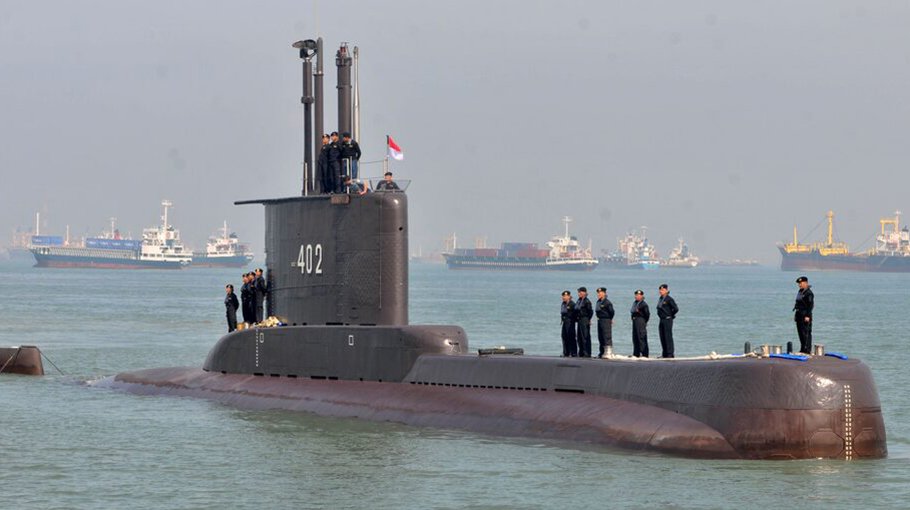Why Indonesia needs a blue-water navy

Since 2023, tensions have sharply escalated in the South China Sea. Chinese Coast Guard vessels have repeatedly rammed Philippine Coast Guard vessels, with Indonesia also affected by China’s increasingly assertive behaviour. While no severe incidents have occurred, the Chinese Coast Guard deployed its largest vessels near the North Natuna Sea in early 2023, raising concerns among local fishing communities.
This situation highlights the limitations of the Indonesian Navy. Despite Indonesia’s normative contributions to regional stability, such as pioneering the ASEAN Outlook on Indo-Pacific, its maritime hard power remains constrained.
The Indonesian Navy is classified as a green-water navy, with limited capability even to secure its exclusive economic zone and address small-scale threats such as illegal fishing.
Indonesia has ambitions to transform its naval forces into a blue-water navy which is capable of projecting power beyond its maritime territory. The groundwork for Indonesia’s naval modernisation was laid during former president Susilo Bambang Yudhoyono’s administration when then-defence minister Purnomo Yusgiantoro articulated the Minimum Essential Force as a target for Indonesia’s military by 2024.
Indonesia’s ambition is even more expansive for 2045, envisioning a navy capable of projecting influence regionally and globally.
But several challenges remain on the path to realising this vision. First, Indonesia must address the limited number, capacity and usage of its outer naval bases. Indonesia has established bases on remote islands like Natuna Besar, Miangas and Rote Ndao, but they function more as sentry posts with small naval units, lacking the comprehensive infrastructure needed for full-fledged forward operating bases..
Indonesia should also scrutinise its naval assets by number and type. As of 2023, Indonesia possesses only eight combatant ships with ranges exceeding 5,000 kilometres, comprised of two newer and six ageing frigates. Its combatant fleet is dominated by small, fast attack craft capable of undertaking only inshore operations and its submarine fleet consists of four vessels, with only three younger than forty years. Although Indonesian President and former defence minister Prabowo Subianto has spearheaded significant procurement efforts with international partners since 2020, the number of vessels acquired remains limited and many will not be delivered for another decade.
The final and perhaps most pressing challenge to Indonesia’s naval modernisation is the budget. The government has earmarked just 20 trillion rupiah (US$1.32 billion) for the Indonesian Navy’s 2025 budget, which represents less than 15 per cent of the overall defence budget. Developing a robust naval force will require substantially increased investment in procuring ocean-going vessels, maintaining the fleet, training personnel and building a domestic maritime industry.
A blue-water navy would enable Indonesia to play a more significant role in maintaining geopolitical stability in the Indo-Pacific. It would enhance Indonesia’s capacity to deter external threats and secure critical sea lanes, including the Malacca Strait and the North Natuna Sea. This robust naval power would enhance Indonesia’s diplomatic leverage in the Indo-Pacific, bolstering its status as a non-aligned regional middle power.
But achieving this vision will require sustained and strategic efforts. The procurement of ocean-going vessels must remain a top priority, particularly under Prabowo’s leadership.
Key acquisitions should include destroyers, heavy frigates, amphibious landing vessels and offshore patrol vessels. The government must also invest heavily in the domestic naval industry to reduce reliance on foreign suppliers and address delays in vessel delivery. Currently, only two Indonesian shipbuilders — PT PAL Indonesia and PT Noahtu Shipyard — have the capacity to build ocean-going vessels. Expanding this capacity is essential for long-term success.
Jakarta should also boost its overall defence economy. Future policymakers need the political will to gradually increase the overall defence budget to one to 1.5 per cent of GDP in the next decade, compared to the current 0.7 per cent. Indonesia’s annual economic growth should be at least seven per cent to compensate for this significant increase, which might be achieved by bolstering the manufacturing sector. Transparent governance will also be essential to ensure effective procurement planning and implementation.
Lastly, Indonesian policymakers should commit to developing supporting infrastructure for naval operations in outer islands, including major naval bases and logistic supply lines. This is crucial to strengthen the navy’s capacity to undertake broader operations beyond its exclusive economic zone.
Fulfilling the vision of a blue-water navy is a long-term goal that will demand significant commitment across various sectors. Indonesia must prioritise increasing its defence budget, investing in its maritime technology industry and developing the infrastructure needed to support expanded naval operations.
While the path is challenging, a blue-water navy would enhance Indonesia’s strategic position and contribute to greater stability in the Indo-Pacific.
Alfin Febrian Basundoro is a Master of Strategic Studies student at The Australian National University and former staff member at the Indonesia–China High-Level Dialogue and Cooperation Mechanism Secretariat.
Probo Darono Yakti is Lecturer of International Relations at Airlangga University, Indonesia.
Source: East Asia Forum



